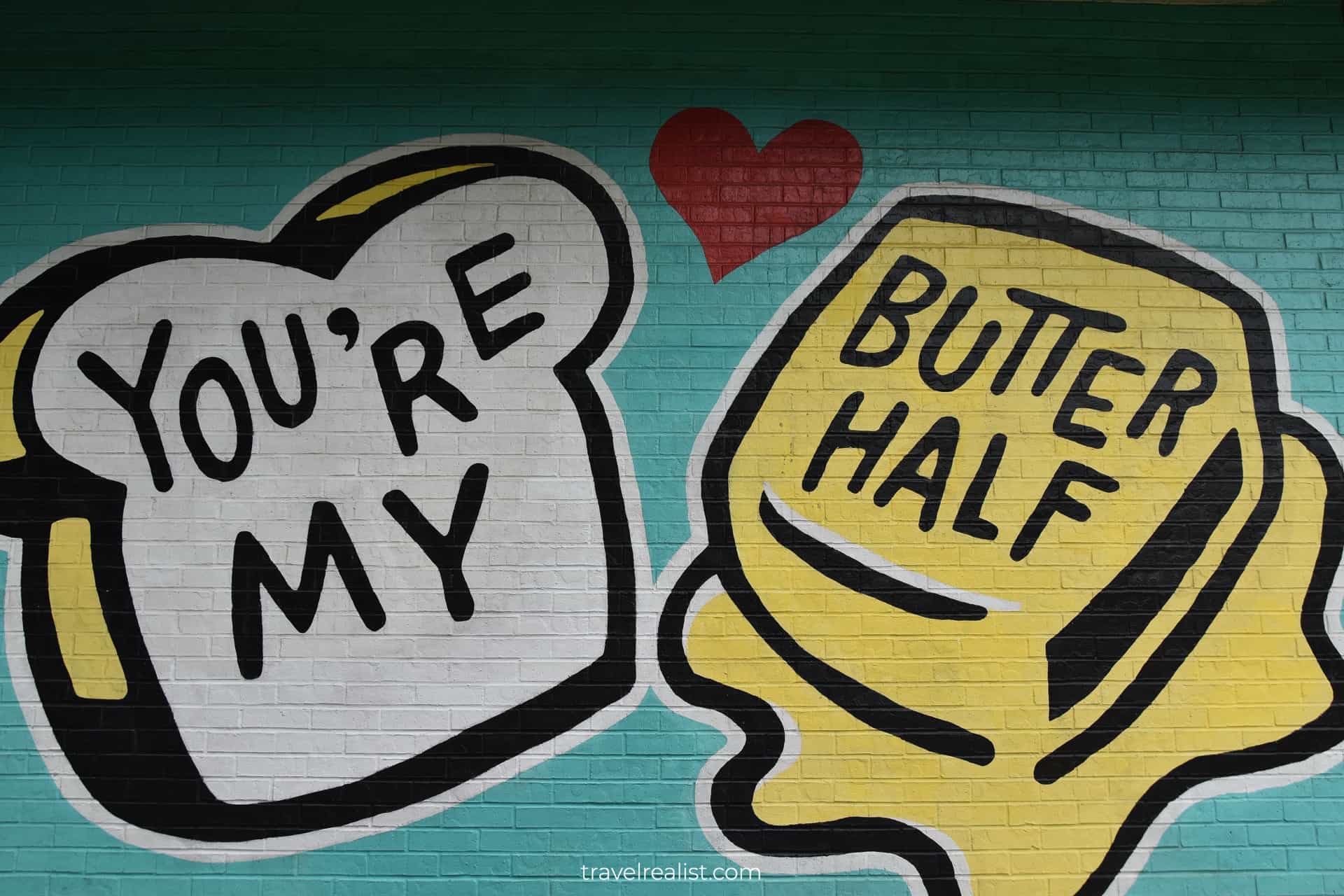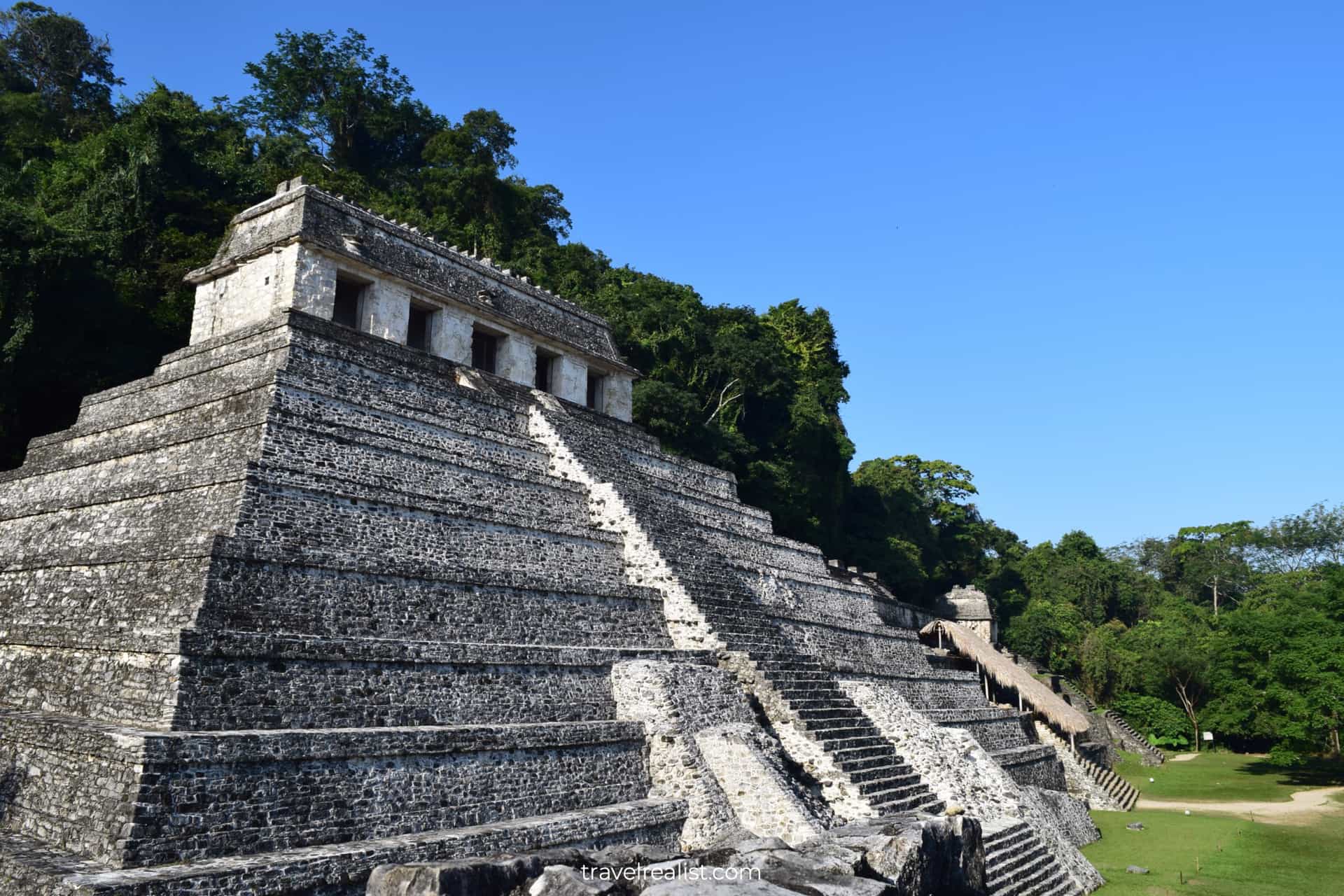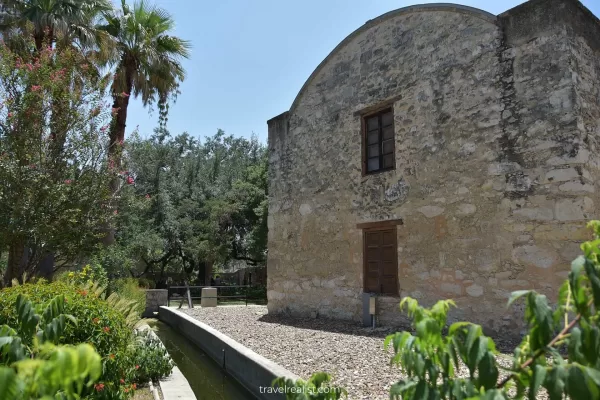Bryce Canyon: 12 Must-See Stops on the Scenic Drive
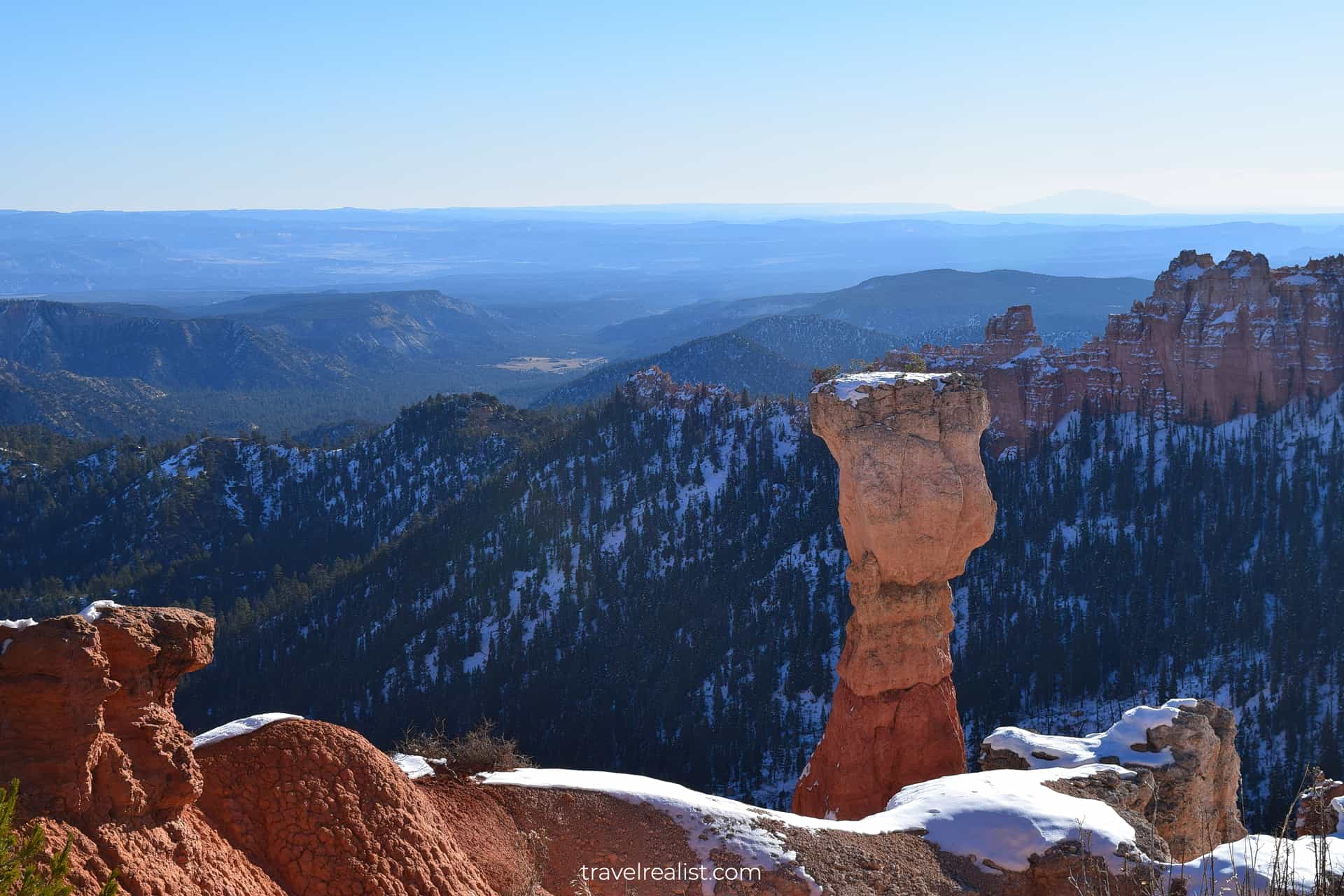
This realistic Bryce Canyon Scenic Drive Guide helps you plan your next road trip in this national park.
Bryce Canyon is a unique destination for a road trip. The park is best known for hoodoos, bright colored rocks. These erosion products are the main reason 1.5 million people come to Bryce Canyon each year.
This post includes affiliate links that will earn us commission if you make a purchase via these links.
Sights & Places of Interest
Bryce Canyon is a large park that has a lot of things to see. You probably think that visiting this park requires a lot of time.
But there is an easy way to explore Bryce Canyon. You just need to drive the 36-mi (58-km) Bryce Canyon Scenic Drive.
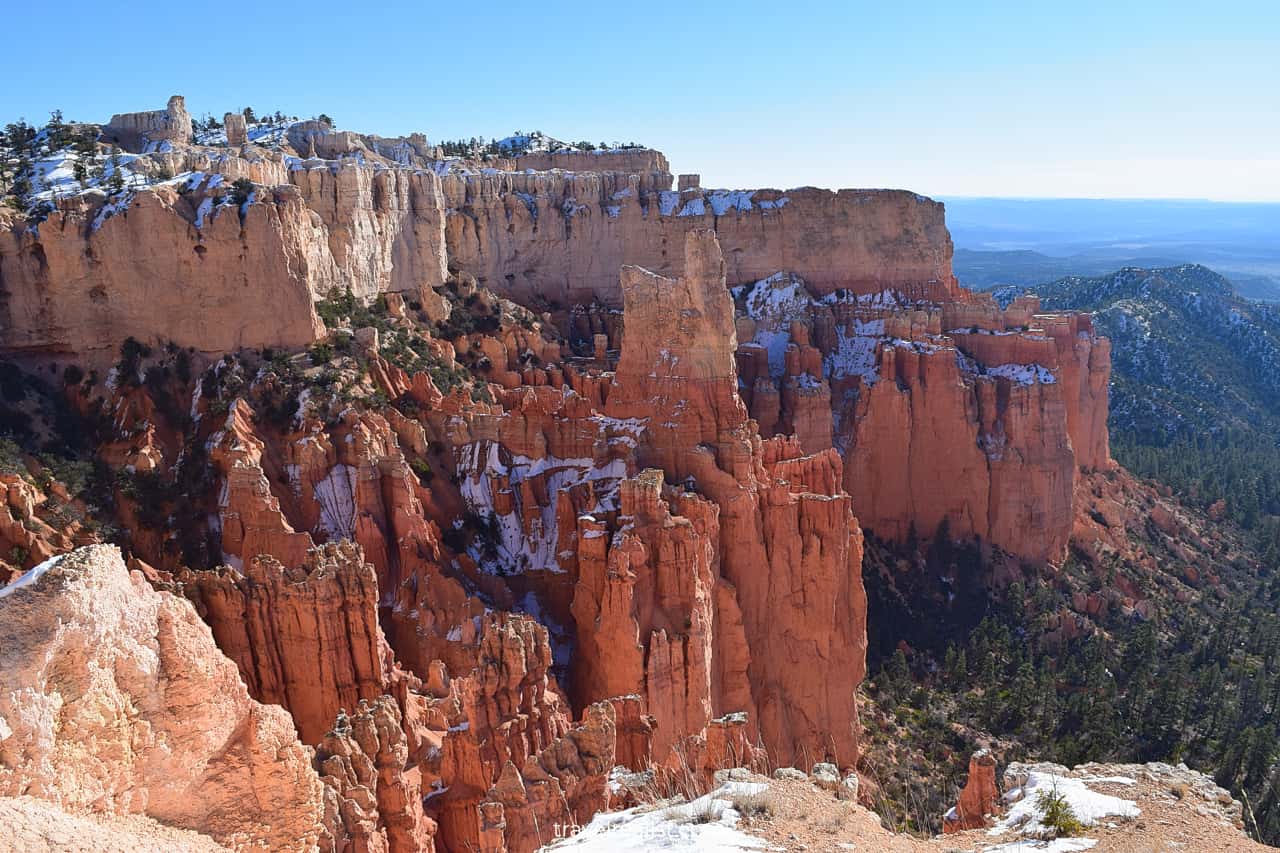
There is no right or wrong way to explore the Bryce Canyon Scenic Drive. You could stop at the viewpoints in the order you see them, like in most national parks.
In this case, you would start your exploration at Fairyland Point near the park entrance. You would then continue stopping at viewpoints until the end of the Scenic Drive.
But you might want to drive to the furthest point first without stopping. In fact, there are a few reasons to start at Rainbow Point.
- It is a much easier, safer, and faster way to explore the park. All viewpoints in the park are facing east. You would not have to deal with oncoming traffic this way.
- You would have gotten a glimpse of all viewpoints by the time you reach the end of the road. You could make a decision where to stop and what to skip.
- Bryce Canyon gets cold if you visit during late fall and winter. You could spend the coldest morning hours driving in your warm car.
- You can beat the crowd at most viewpoints. Busier traffic at Sunrise, Sunset, and Bryce Points is a trade-off for starting your exploration at Rainbow Point.
This Bryce Canyon Scenic Drive Guide follows a path from Rainbow Point to Fairyland Point.

1. Rainbow Point
Rainbow Point will be your first stop if you drive all the way to the end of the scenic drive. It is not the most scenic spot in Bryce Canyon. But it is right next to the parking lot.
Rainbow Point is also the start of the Under-the-Rim Trail. It is the longest trail in the park. This trail follows most of the Bryce Canyon Scenic Drive.
It takes 22.9 miles (36.9 km) to get from Rainbow Point to Bryce Point. You would need almost a full day to hike this trail.

2. Yovimpa Point
There are not one but two viewpoints at the end of the Bryce Canyon Scenic Drive. Yovimpa Point involves a short walk on a concrete path.
You will not regret hiking 0.4 miles (0.6 km). This point has fantastic views of Dixie National Forest and Grand Staircase-Escalante National Monument.
You could see for miles and miles. This landscape is quite similar to Canyonlands. Except you will see canyons with trees and bushes in Bryce Canyon.
You will enjoy a combination of red rocks, green pine trees, and white snow if you visit in winter. Cold weather is the only downside of a winter visit. Make sure you have a good jacket to stay warm.
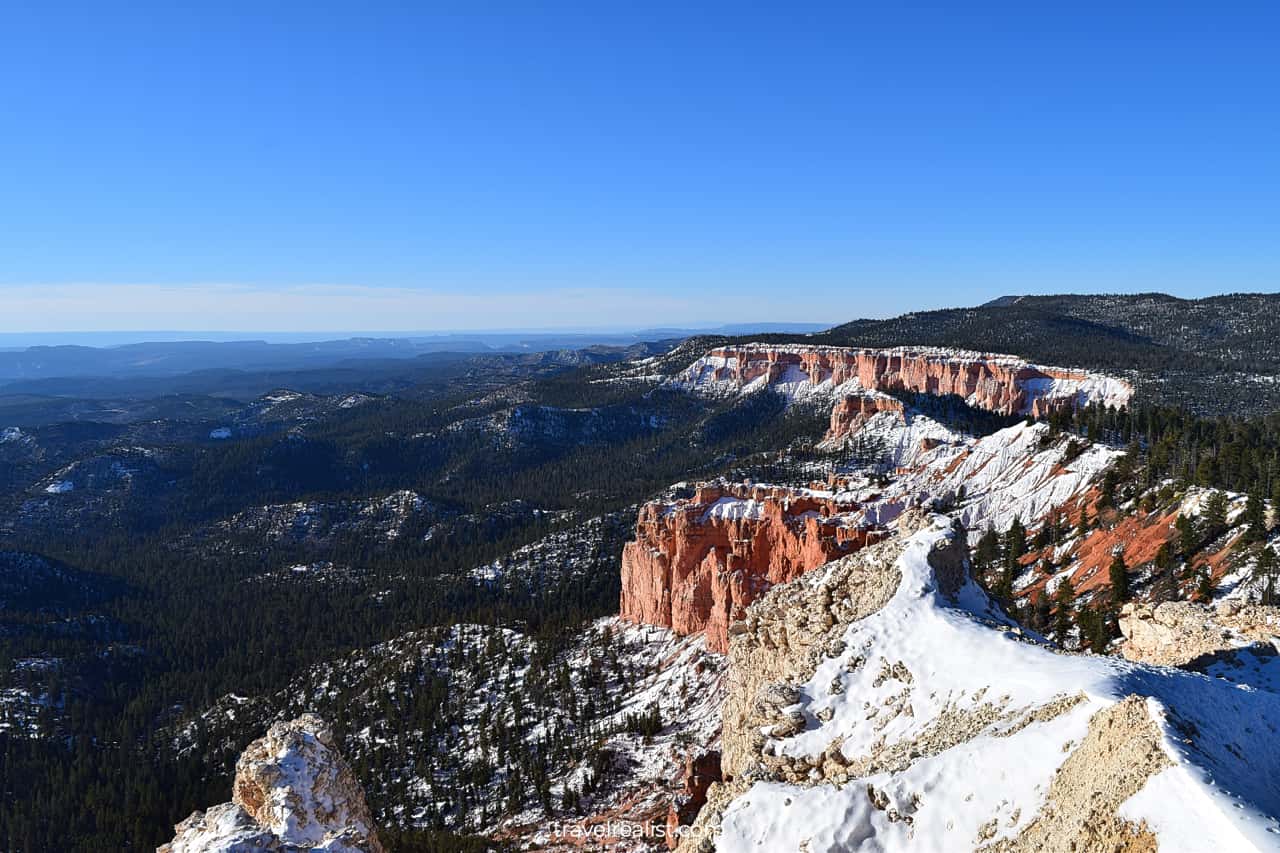
3. Black Birch Canyon
As you start driving back, you should decide which viewpoints are worthy of your time. Not all viewpoints are created equal. Some of them have much better views than others.
You might want to skip Black Birch Canyon. It is a small viewpoint with just a couple of parking spots. Its views pale in comparison to other points due to the trees getting in the way.
4. Ponderosa Canyon
This would make Ponderosa Canyon your next stop in the park. This viewpoint has a lot less trees and more parking spots. It is a great way to get a clear view. You can also see hoodoos up-close.
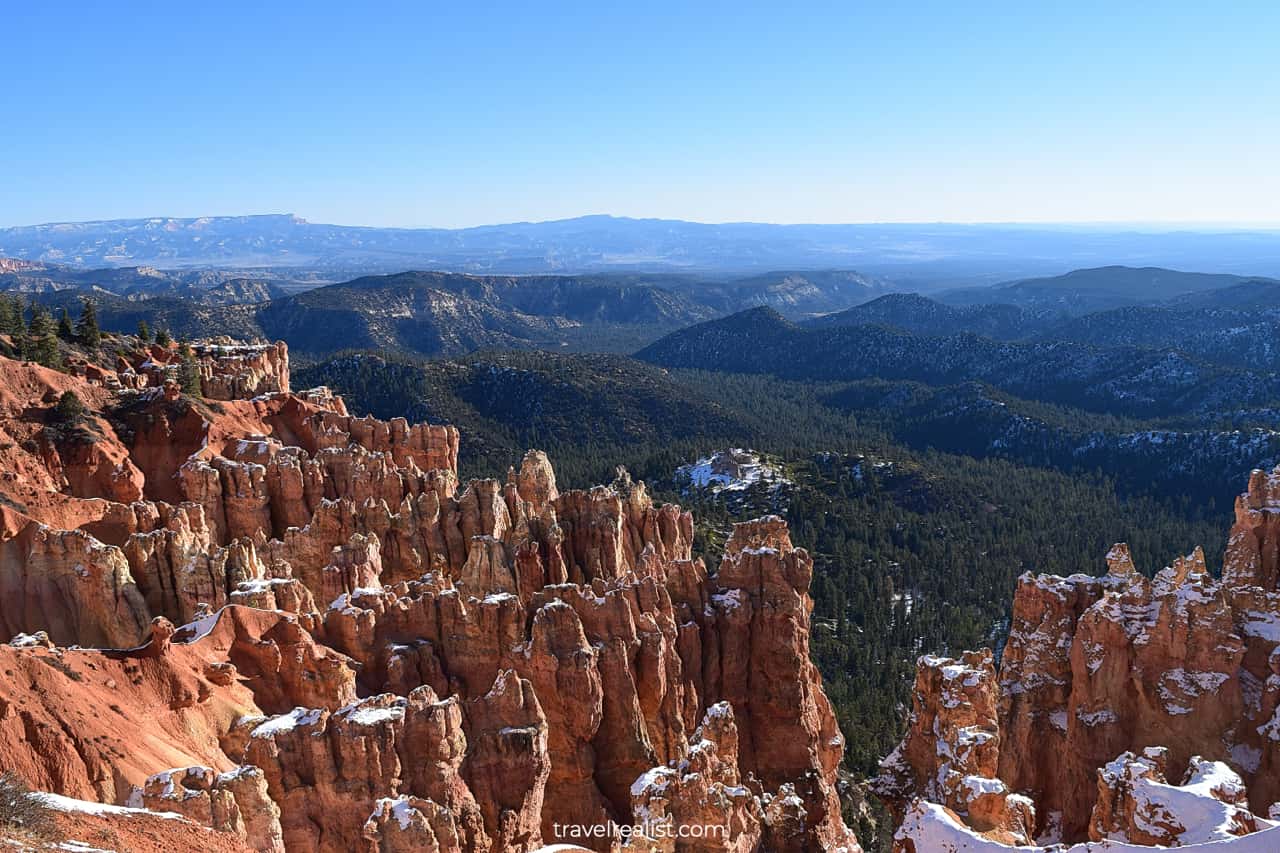
The Aqua Canyon Connecting Trail also starts at this point. It brings you to the Under-the-Rim Trail. Budget over an hour to hike this 3.2-mi (5.1-km) out-and-back connecting trail.
5. Aqua Canyon
The next few viewpoints on the Bryce Canyon Scenic Drive are all worth a stop. Aqua Canyon provides superb views of creeks, rocks, and National Forest below.
It is also home to one of the most memorable single formations in the park. This orange and white hoodoo looks a lot like Balanced Rock in Arches.
You will also see a few red, orange, and white rocks at Aqua Canyon. Spend a few minutes admiring these beautiful formations.
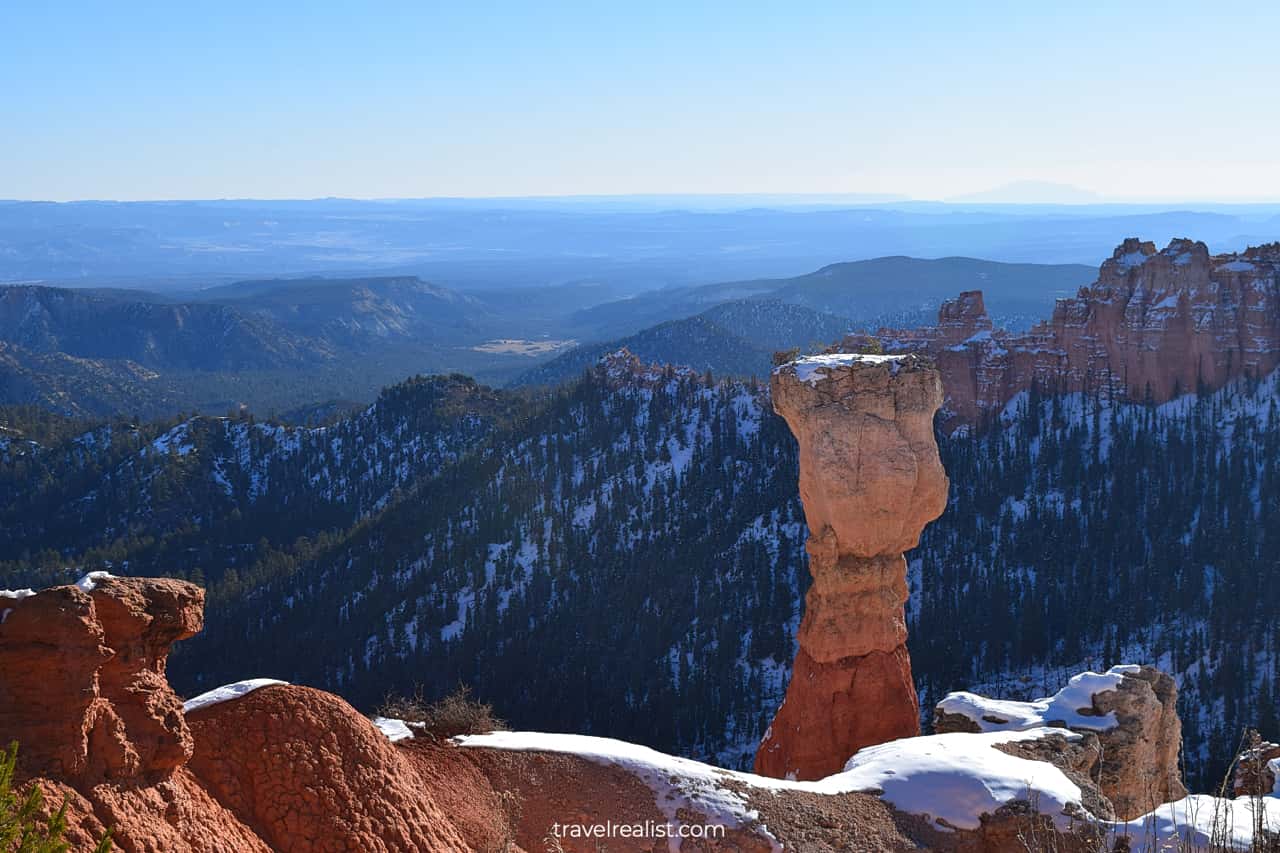
6. Natural Bridge
Natural Bridge is another spot you would not want to miss. It is an impressive natural arch. You could see this arch right from the parking lot.
It is not quite Delicate Arch in Arches. But this natural bridge looks like formations in Canyonlands, Capitol Reef, and El Malpais across the Southwest.
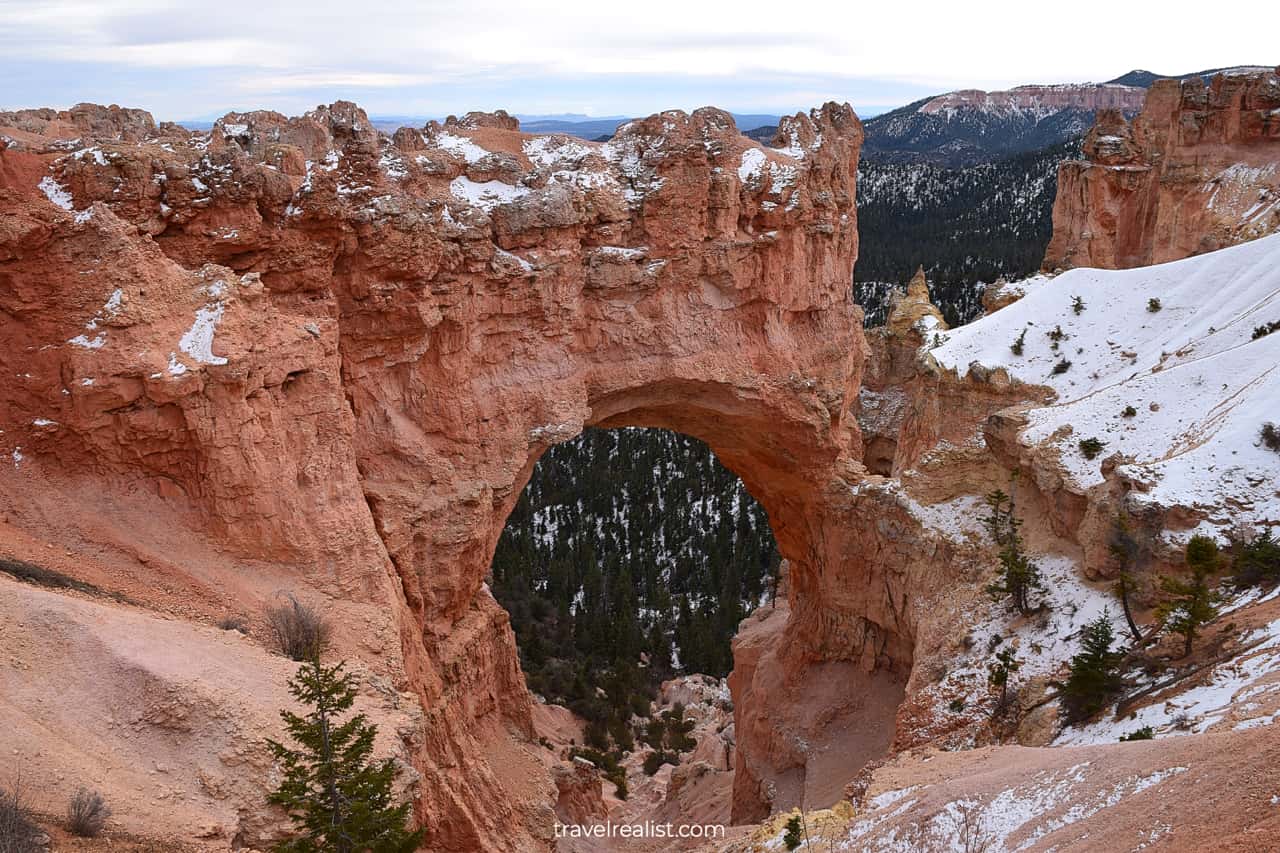
7. Farview & Piracy Points
Farview and Piracy Points are a combo stop. The viewpoint is right next to the Scenic Drive. The Point involves a 0.6-mi (1-km) hike. The views are quite beautiful.
But if you have little time in the park, you could skip this stop. This way, you could spend more of the precious time at more memorable viewpoints and trails.
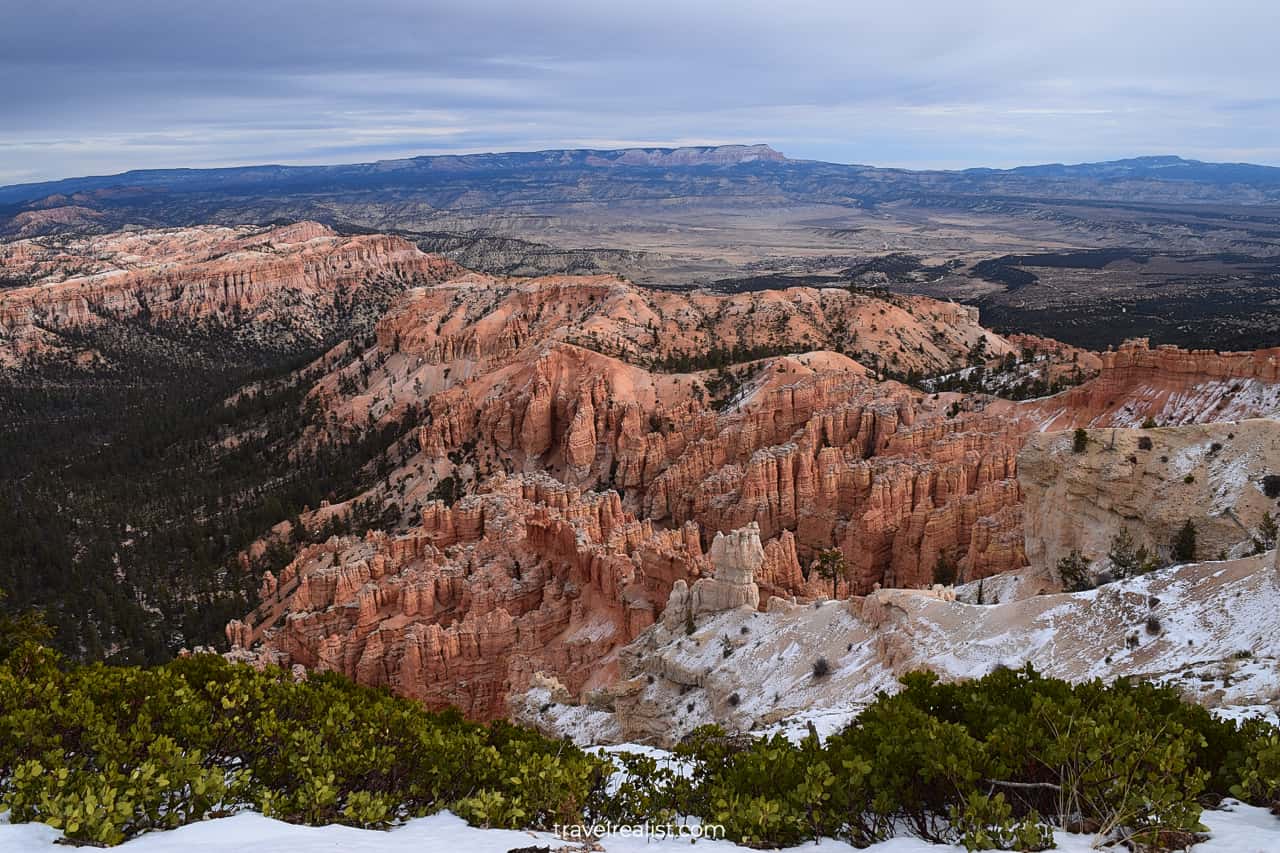
8. Swamp Canyon
The same tip is true for Swamp Canyon. It is a good stop to stretch your legs on another trail. But the views might not be worth the effort.
You should better hurry up to beat the crowd at the other viewpoints. In this case, you will be driving for a while from Natural Bridge to Paria View.
9. Paria View
Paria View requires a short detour from the Scenic Drive. You could hike 0.2 miles (0.3 km) to the observation deck.
The short hike is worth it. You will see a lot of bright orange rocks. Green bushes and blue sky above the Yellow Creek Valley will complete the picture.
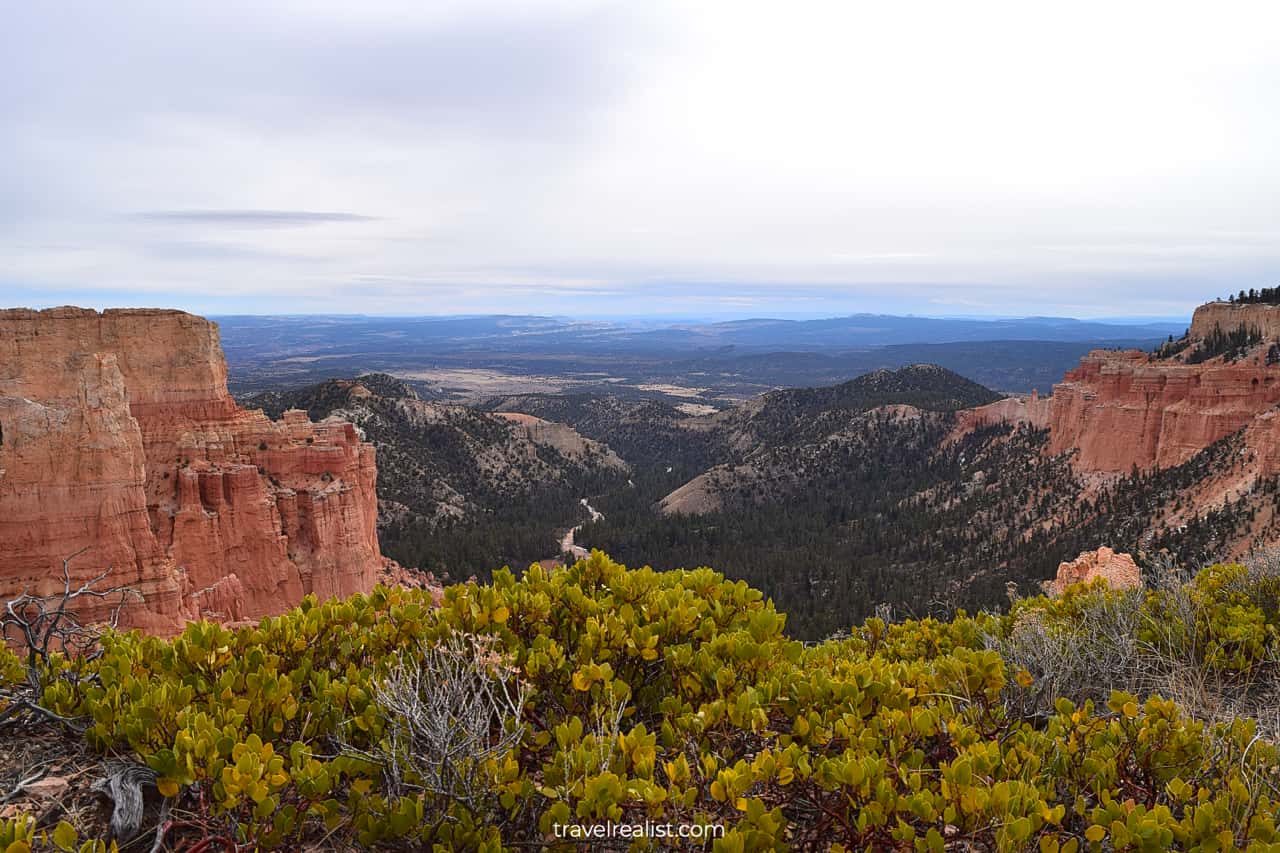
10. Bryce Point
It goes without saying that you should stop at Bryce Point. This viewpoint has the most iconic view in the park.
It has an incredible number of hoodoos in an amphitheater setting. You will get panoramic views from the observation deck. These views are very different from other parks, monuments, and sites.
There are also a few trails that start at Bryce Point. You could hike the Under-the-Rim, Rim, or Peekaboo Loop Trails. All of them take a few hours to complete.
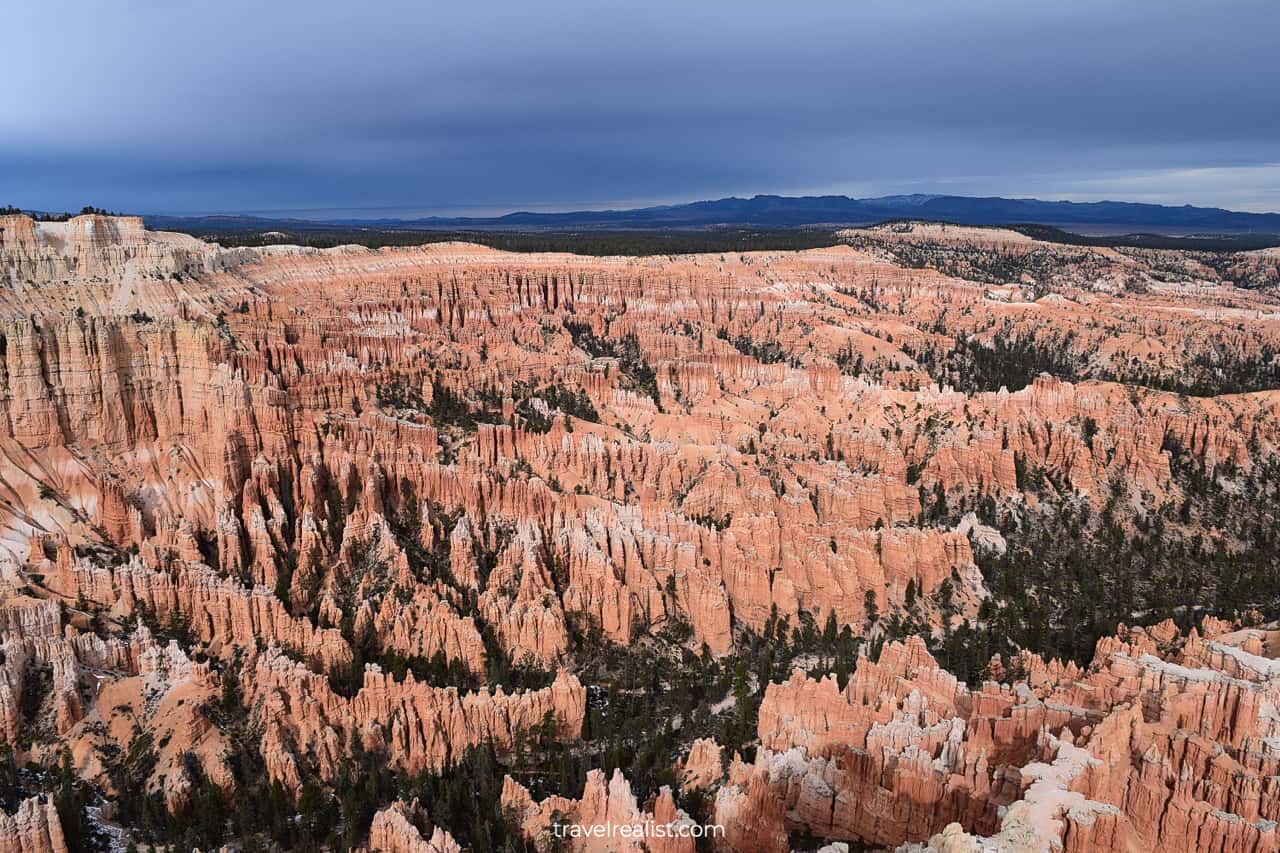
11. Sunset & Sunrise Points
It is time to continue your scenic drive after exploring Bryce Point. Sunset and Sunrise Points are the closest stops to the Visitor Center.
As their names suggest, these viewpoints are at their best during early morning and late evening. Light and shadow combinations create a unique way to experience formations during rising and setting sun.
These viewpoints are home to the most scenic trails in the entire park. You could take the Sunset Point to Sunrise Point, Queens Garden, or Navajo Loop Trails.
These trails are all easy to moderate in difficulty. They take about 2 to 3 hours each to complete. As a result, they could become the main attraction on your Bryce Canyon day trip.
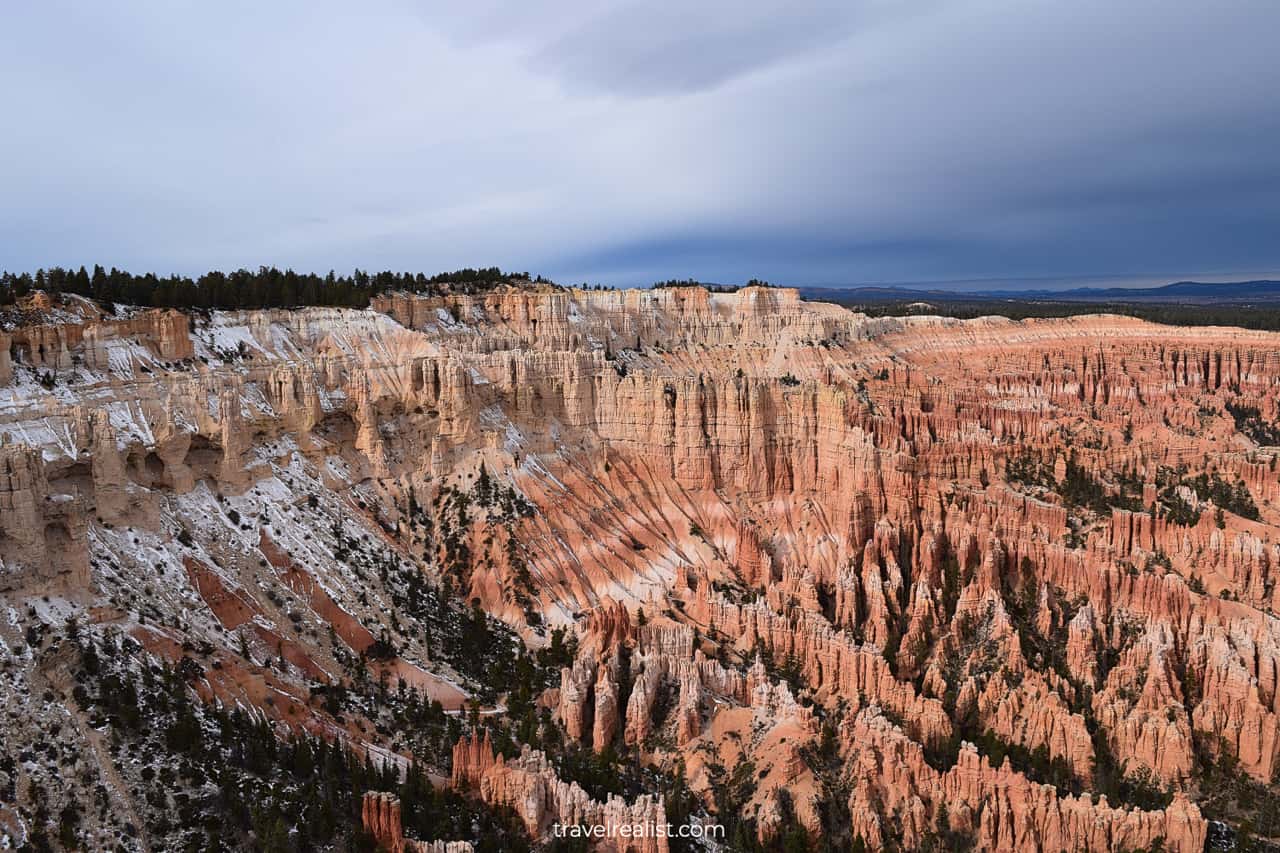
Unless you hike the trails or stop at these viewpoints at sunrise or sunset, you could skip them. The views from these points are not as impressive if you compare them to earlier stops.
With that said, you should start from this area if hiking is part of your Bryce Canyon day trip. A close proximity to the Visitor Center makes these viewpoints a popular spot.
Remember that the parking lots at Sunset and Sunrise Points are quite small. So you could easily lose 15 to 30 minutes waiting for a spot to open up.
12. Fairyland Point
Once you pass the Visitor Center you could stop at Fairyland Point. This stop is the starting point for a long, 7.7-mi (12.4-km) Fairyland Loop Trail.
This trail brings you to Sunrise Point. You will see lots of hoodoo formations on the way. But unless you are a trail runner, it could be your only stop on the Bryce Canyon day trip.
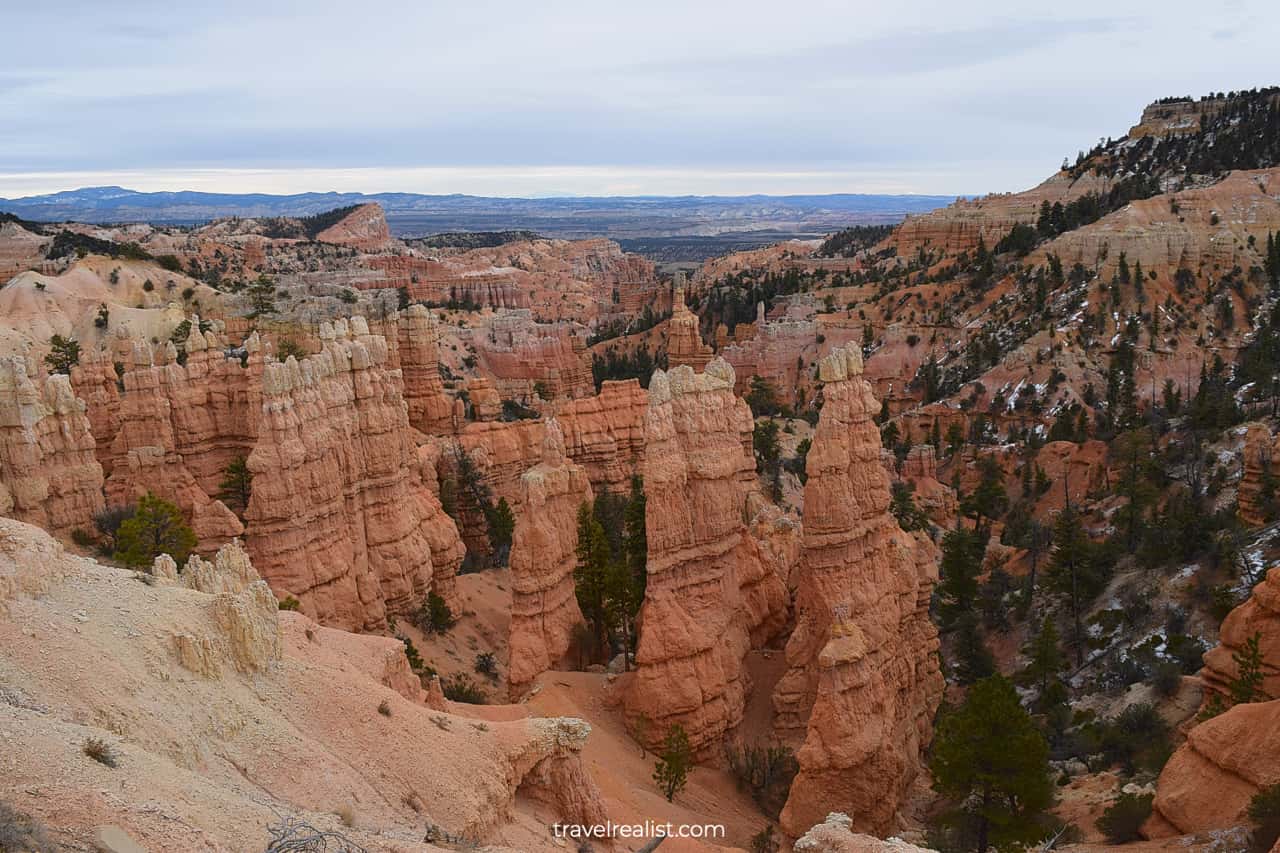
Continue with this Bryce Canyon Scenic Drive Guide. You will learn more about ways to get to the sights, entrance requirements, and places to stay.
Getting to Bryce Canyon
Bryce Canyon is in Southwestern Utah. The park is closest to the town of Bryce. It is slightly more remote than nearby Zion. But the breathtaking views make the additional drive well worth it.
The park is about halfway between Salt Lake City and Las Vegas. You can reach the park in about 4 hours from Utah’s capital. A drive from the Sin City will take about 4.5 hours. Both cities are major hubs and gateways to the region.
The park is next to other sights. Cedar Breaks, Dixie, and Grand Staircase-Escalante are all within reach. Even the drive to the park is scenic.
- You can enjoy Capitol Reef to Bryce Canyon road trip.
- Or take a memorable drive from Zion to Bryce.
Where to Stay near Bryce Canyon
Bryce Canyon is in a fairly remote part of the state. But the park’s popularity sparked investment in tourist infrastructure.
When it comes to places to stay, Bryce is usually the best option. It has a perfect combination of factors.
- This town is near the national park.
- It has a few good hotels.
- You can expect to pay a reasonable price per night.
In most cases, you should look no further than Bryce when looking for lodging near Bryce Canyon.
Low number of places to stay is the only drawback of this town. You might pay a higher price if you travel during the holidays.
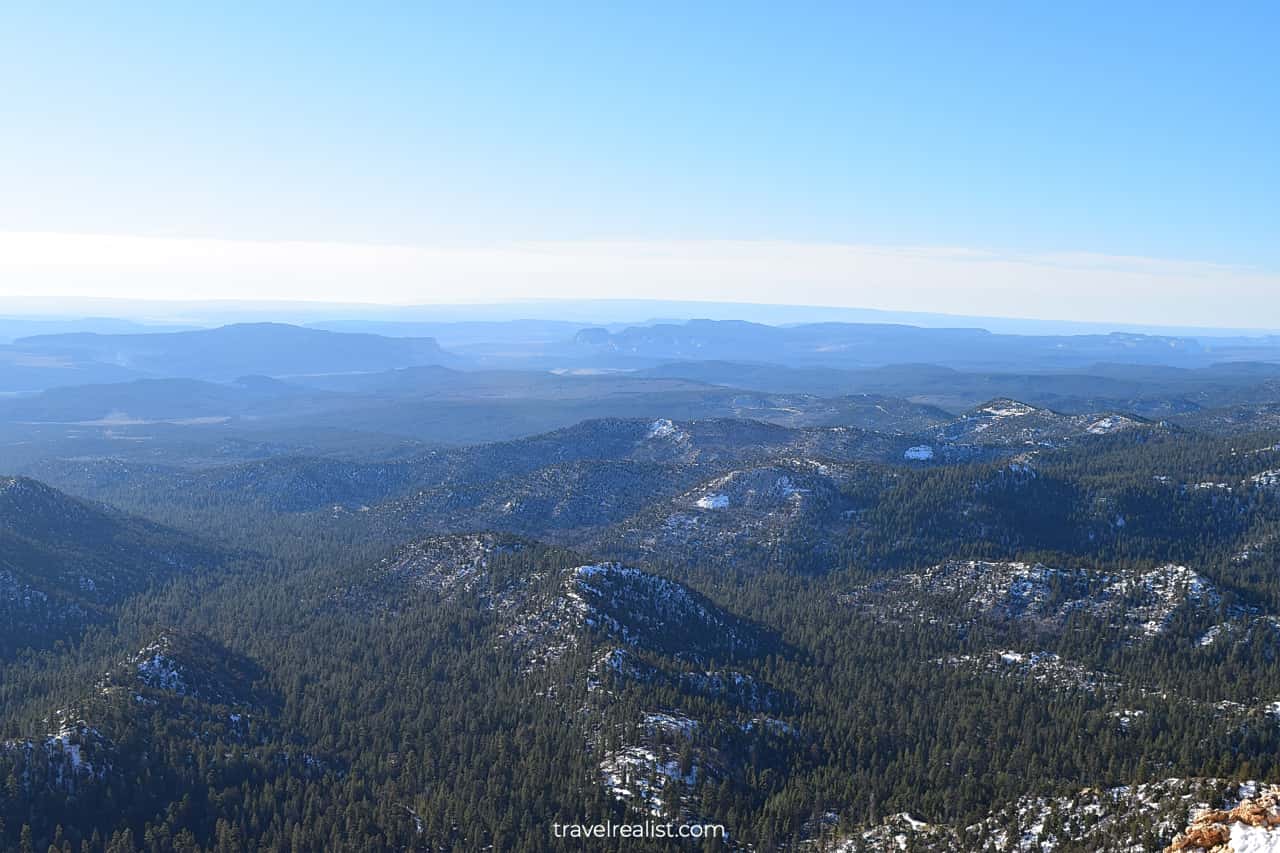
Entrance Requirements & Passes
Bryce Canyon is a popular park. But it attracts far less visitors than Zion. As a result, it is easier to visit Bryce Canyon on a road trip or a day trip.
You do not need to partake in a lottery or a take a shuttle bus. Instead, you can just drive your car or rental on the Bryce Canyon Scenic Drive.
It costs $35 per car to visit the park. Your America the Beautiful annual pass covers the entrance fees. It is another example of an incredible value the pass provides.
The park is open 24 hours a day, 365 days a year. But the Scenic Drive might close temporarily for plowing after snow storms. Keep this risk in mind when visiting the park in winter.
Takeaways: Bryce Canyon
Bryce Canyon is a very scenic national park. Bright colored formations make it a unique spot. Bryce Canyon is a great destination for a day trip or a road trip.
The Bryce Canyon Scenic Drive is the easiest way to explore the park’s sights. Here are a few tips to make the most from your day trip or road trip to Bryce Canyon.
- Arrive early to beat the crowd at Bryce, Sunrise, and Sunset Points.
- Start your exploration at Sunset Point if you plan on hiking.
- Take the Navajo Loop trail to enjoy formations up-close.
- Proceed to Rainbow Point at the end of the Scenic Drive.
- Keep an eye on scenic vistas as you pass them on the way to Rainbow Point.
- Stop at the viewpoints you find interesting.
- Do not miss Ponderosa Canyon, Aqua Canyon, Natural Bridge, Paria View, and Bryce Point.
- Budget at least 2.5 hours to finish Bryce Canyon Scenic Drive and stop at major viewpoints.
Take a look at this Bryce Canyon Scenic Drive Video Guide. And visit the YouTube channel for the latest videos.
Frequently Asked Questions
Bryce Canyon has the most hoodoo formations on the planet.
You do not need a reservation to enjoy Bryce Canyon Scenic Drive or hike the park’s trails. But overnight through-hikes and campgrounds in the park require reservations.
The park is open year-round. Summer and shoulder seasons are the best time to visit the park. You could enjoy it during the warmest seasons. But a winter visit is also fun.
A free park shuttle runs from April to mid October. It is ideal for hikers who plan on taking the one-way Rim or Under-the-Rim trails.
It is easiest to fly to Salt Lake City or Las Vegas. You could then drive to Bryce Canyon from these hubs.
You can drive your car in Bryce Canyon. You do not need to take a shuttle like in Zion. It makes Bryce Canyon Scenic Drive an excellent road trip destination.
You should budget at least 2.5 hours to visit Bryce Canyon. You could finish the Bryce Canyon Scenic Drive and stop at major viewpoints in this time. Any hike would add a few hours to your Bryce Canyon trip.
Bryce Canyon Scenic Drive is 18 miles each way.
Bryce Canyon is an excellent day trip destination. You can drive its Scenic Drive and enjoy the viewpoints. Pick a short hike, like Navajo Loop Trail, to explore the formations even closer.
Safe realist travels!

